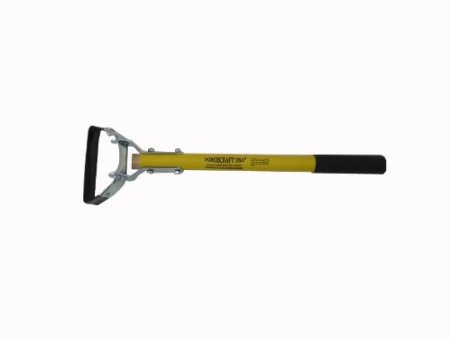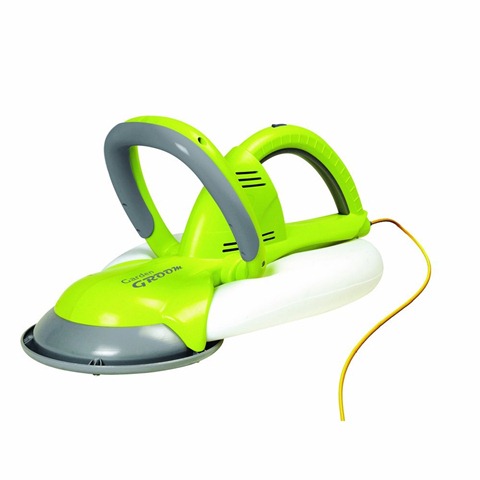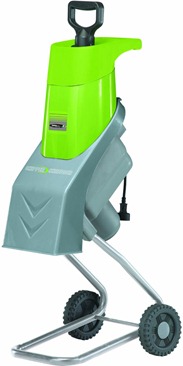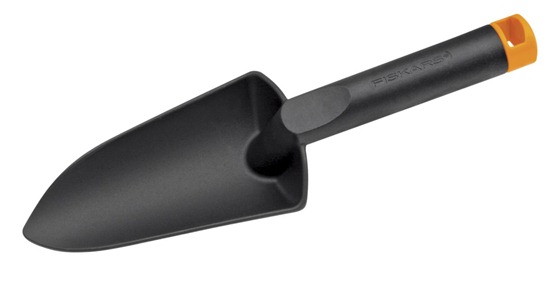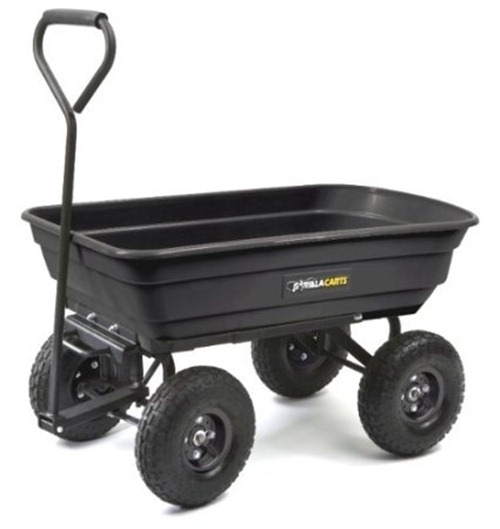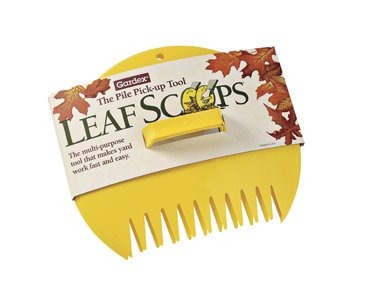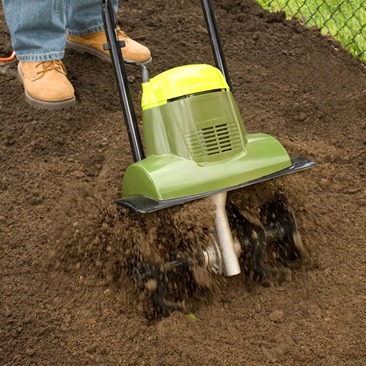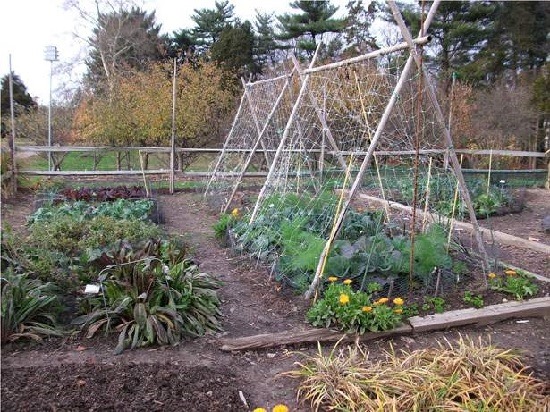Recent Articles
Tips to choose plants for indoor gardening
11.1 years ago guest post, planter Leave a comment

Indoor gardening is one of the best ways to decorate your home. These are simple to maintain provided you give a good amount of attention and care to the indoor plants. Even people having limited space could work wonders and end up getting a rewarding experience. Choosing the right set of plants for your indoor garden could give you some of the best enjoying experience. However, choosing these plants for your indoor garden for your home or office is always a complex affair. At times, even the people from the nursery staff are seen struggling for choosing the plants if you fail to give the right picture of indoor garden or the things you want in the garden. If you select wrong plants for your indoor garden, you may end up creating a mess at your space. Hence it is always recommended to research about the same. The below is the list of helpful tips to choose proper plants for your indoor gardening mission. Let’s check them out:
Check your space size
There are number of plants fit for indoor gardening but each one has its own space requirement. Hence before you choose any check its exact space requirements. Select the right plant for your space, which you are supposed to be filled. Always keep in mind that most of the indoor space doesn’t need any light for plants to blossom and that the flowering the plants and the ones having the variegated leaves simply need higher amounts of light levels as compared to the other plants. The plants, which are seen doing good with the full or partial amount of shade are best suited to live inside the gardens and can move anywhere inside your home or office.
Consider the weather conditions
Another factor that you need to consider is the weather conditions. You are supposed to select a plant as per the weather conditions you have at your space and its surroundings. If you choose flowering plants then make sure you understand very well that these require good amount of light levels but the plants including the gorgeous Phalaenopsis orchid are seen doing good at spaces where you have high humidity levels like the bathrooms and kitchens. Also, the Phalaenopsis orchid does not require direct sunlight or being placed over any draft, hence the areas that are overly air conditioned are certainly not the appropriate for such delicate kinds of plants.
Check the size
Once you have considered the above two factors, it’s time to consider the element of size. The small size flowering plants including the bamboo and cacti could be a good option for placing them over the coffee table or at the spaces with limited amount of space. The herbs are often considered as the ideal option for small size window boxes and palms including thatch palm or the love palm plants. These appear good in the different free standing pots seen over your room’s corner wherein you want to put some little larger plant.
Consider the factor of time
While choosing plants, you need to consider your attentiveness and active participation time as well. The evergreen and Cacti plants would hardly require any effort whereas the violets and several other exotic plants are called as temperamental and demanding in terms of time. Avoid going for a plant, which demands careful controlled amount of water feeding when you know you hardly have time to do so where there is a possibility of forgetting to the feet the water as well. The fact is, most of the indoor plants die down due to over watering hence you are supposed to check the moisture levels of the soil before you start watering your plants abruptly. This will help you in preventing things like the water logging. If you use the sub irrigation over the decorative pots, then make sure the plants would require more amount of water at the roots.
Know the good performing indoor plant options
There is a wide range of indoor plants, which you could choose for your indoor garden. A few of these could be chosen as per the above considerations, while there are few specific high performing indoor plants. These plants could be planted inside any and every indoor garden as they are among the high performing plants. These include Cast iron plant, Dragon tree, Love Palm, Thatch Palm, Hearth Leaf Philodendron, Devil’s Ivy, Mahogany tree, Peace lily, Aroid palm and Mother in law’s Tongue.
Final word
A good array of plants inside your indoor garden could do wonders provided you choose the right amount of plants for your space. However, choosing your indoor plants for your indoor space is always a complicated thing. When it comes to choosing them, consider the above tips.
About The Author: Alia is a writer/blogger. She loves writing travelling and reading books. She contributes to Gamification
Guess it is not quite spring yet
11.1 years ago Uncategorized Leave a comment

I really can’t complain with the many feet of snow dumped over the rest of the country but got a bit of a surprise with a couple inches of snow in the garden when we haven’t had any here all year…
How to construct a raised vegetable garden
11.1 years ago guest post, outdoor seed starting, planter, vegetable bad 3 Comments
If you have a messy child who loves to plant and play around the garden, but who you are fed up of cleaning up after a day of joyful dirty exploration, a raised garden bed may be the ideal solution you are so deeply looking for. This type of bed is easy enough to build, takes around 2 hours to build from start to finish, and will set you back by around $200 – $300.

Recommended materials
Although you could use pretty much any type of wood you wish to make the bed, it is recommended that you use some form of rot-resistant wood, which isn’t coated in anything which may be harmful if eaten; after all, you are about to plant vegetables in it, and we all know how much children love to put anything and everything into their mouths. Next, you need to select your plot of ground. Ideally it will be somewhere with plenty light, and a maximum of 4ft wide, so that the children can reach into the middle without climbing or falling into it, however it can be as long as your elected choice of timber allows. For the best drainage, you should remove the grass on your elected plot, and tile it under the soil. The following set of instructions will allow you to make a bed 4ft wide by 10ft long, but you can change the values to suit your needs.
The frame
Firstly, you should cut an 8ft length of your elected timber in half, to create your 2 4ft ends. Hold one of your 10ft lengths on its end, and line up one of your 4ft cuts so that the face of your 10ft length covers the cut end of your 4ft length. Using a drill or screwdriver, attach the two pieces together through the back of the 10ft board, and into the cut end of the 4ft length. It is advisable to use 3 x 3” screws, but you can essentially use as many as you wish to ensure it is sturdy. Do the same thing for all sides, so you should now have the outline of your bed in a basic rectangle shape. Once all the sides are attached, use a framing square to ensure all the corners sit at a 90 degree angle, and adjust where necessary.
Corner support
Now that you have your bed in a perfect rectangle, you want to keep it that way. So attach a piece of wood to each corner, which should give you a triangle shape at each of your corners. Again, attach these pieces with as many screws as you feel necessary.

Select your spot
Now you can move your frame to your elected sunny spot, and mark out where it will lie by drawing a line around the outside of your frame with a shovel or spade.

Preparing the ground
Now you know where your bed is going to sit, take the frame out of the way again, and remove the grass layer where your bed is going to sit. After you have removed the grass, try to turn the soil a bit so that you will have good drainage.
Making sure all is level
Lift your frame back into its final sunny resting place, and remove soil from around the edges of the frame so that all sides are level with one another.
Secure your frame
The next step involved settling your frame into place, to ensure it doesn’t move. You should cut 10 2ft lengths of wood, and create a spike at one end by cutting diagonally from around 5” up the long side, into the middle of the short side on both sides. Once you have make all of your stakes, hammer them at least 18” into the ground, and 2.5ft intervals along the outside of the long edges of your frame. Once they are in the ground, secure your stakes by drilling through them and the frame of the bed so that they are 100% in place. Then put a stake into each corner, and secure the same way. Finally, you need to put one stake into the middle of each short edge, but only secure with screws on one side.

Adding your soil
You can now remove the unscrewed edge of your bed, and use your wheelbarrow to empty a combination of soil and compost to fill the bed until the soil sits around 2-3” from the top edge of the frame.
Complete your frame
You can now put the short edge of your frame back into place, and secure with screws like you did with all of the other sides. As a finishing touch to your masterpiece, you can use a saw to cut the top of all of the stakes so that they sit level with the rest of the frame.

Let the fun begin!
Now that your bed is completed, you can begin to plant your vegetables and plants. Just remember to keep them well watered, and you’ll be eating home-grown vegetable soup in no time at all!
Author Bio: Peter Smith loves gardening at his free time. He also gives online gardening tips to people, click here to go to his site. Apart he is an experienced freelance writer.
How good are the latest gardening tools? Let’s talk
11.2 years ago garden maintenance, garden sheers, gardening tools, guest post 5 Comments
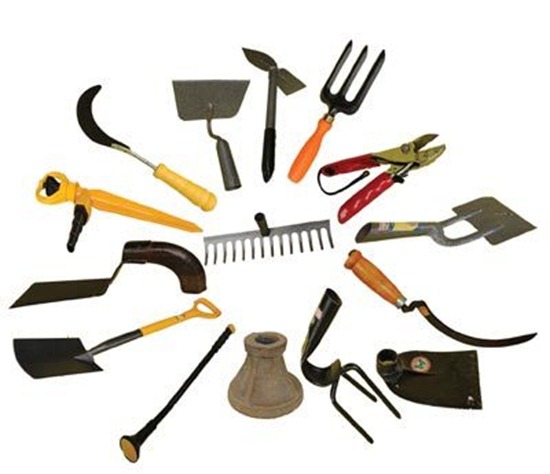
For true garden lovers, taking care of their yard is more than just an everyday task. Hard-working garden owners take pride in their yards, and with the necessary tools in their garage, they find it easier to make their yard look fantastic. Here is a list of the latest gardening tools that help to keep your yard in tiptop shape.
Hula Hoe
Hoes help you to make rows, dig furrows, loosen the soil and kill weeds. This tool is also known as stirrup hoe that makes weeding an easy job. The stirrup hoe is a long-handled tool that makes you work easily without too much bending. Its blade oscillates to and fro like the hips of a hula dancer. This oscillating blade also helps to slice weed roots below the soil surface. Since the blade swivels to and fro it cuts on both pull and push stroke, making it easy to handle in closed spaces between plants and along the edge of flower beds. When the blade starts losing its sharpness you have to replace it with a new one.
Shovels
A good long-handled shovel is used for mixing large quantities of dirt, compost, soil and other related materials. The long handles of the shovel minimize strain on your back and shoulders. The handle is slightly tilted so that your hand remains in a natural position thereby reducing the pressure on hand and wrist. You can also use the shovel for planting trees and shrubs.
Electric Garden Groom
You no longer need to waste time cleaning up hedge trimmings than trimming them. Garden groom is a wonderful invention that is ergonomically designed to trim your hedge. The groom uses its big rotary blade for trimming and collects all the cuttings in its built-in-cavity bag to keep your yard free from debris. Thus the tool makes disposal easy without requiring you to sweep up afterwards which is the most labor intensive part.
Gas powered three-in-one Push Lawn Mower
Ideal for smaller garden, the compact design is easy to handle in closed spaces and features three-in-one cutting system that includes side discharge option, mulching and a rear bag collection. Simply fold the handle and keep it aside when not in use. Its mulching option returns the essential nutrients back into the soil resulting in a healthier and greener lawn. You can adjust the height of the handle for more comfortable pushing. Overall the Lawn mower is designed to be an user-friendly tool.
Electric chipper or shredder
This machine powered with electricity makes quick work out of leaves, pruned branches and plant debris. Converts your garden’s rubbish into beautiful munch or compost material thus saving your job of reduce, reuse and recycle. Its lightweight design makes you comfortable in moving it around the yard. The machine is also provided with a safety hopper lock that stops the motor from operating when opened. So there are no more smoky fumes in your garden.
Hand Trowel
Trowels are ideal for digging holes in garden beds; planting small annuals, herbs and vegetables; planting container gardens and mixing soil with compost, fertilizer and other potting mixes. Look for the latest one piece design where the handle will always stay firmly with the head as you take it deep into tough soil. The latest versions have an easy-to-grasp handle. Overall it offers a hassle free performance.
Hand Pruners
Hand pruners are of two types: the anvil type with a deep sap groove and the bypass type which functions like scissors. Anvil pruners do not require much of hand pressure and is easy to cut. Bypass pruners functions well in tighter spaces. Both the models can be used to cut branches up to 1 inch in diameter. The sap groove prevents the blade from sticking when used to cut sappy wood. Hand pruners reduce pressure and impact on wrists. If you take proper care then these pruners will last longer.
Bulb Planters
This tool can be used to make a perfect hole for planting bulbs and other bedding plants. Its long handle saves your back and makes planting easy. For easy operation, simply moisten the soil before planting. Take the planter to the position where the bulb has to be placed and twist the tool to dig hole to the desired depth, then take out the tool from the hole. Now all you need to do is simply drop in seeds or bulbs without straining your back.
Wheel barrow/ Garden cart
These carts are not only used to transport heavy and bulky materials such as soil, garden debris, plants and compost but also to carry concrete mixing containers. Its light weight makes lifting and managing extremely easy. The latest carts have cushioned loop handle for comfort and powder coated steel frame for extra durability.
Poly Leaf Scoops
Poly leaf scoops can be used to pick up leaves, thorny or poisonous plant trimmings, pine needles, weeds and gum balls without harming your hands. It is also used for bedding mulch and peat moss. Poly leaf scoops are ideal for all seasons.
Electric Garden Cultivator/Tiller
Cultivators are generally used to open up and aerate the soil. The tines of this tool help in mixing of materials and loosening weed roots. If you have smaller rocks on your garden soil, no worry, the tiller kicks them out of the soil and to the top where they can be easily removed. Because of its light weight it digs very well without requiring much of man handling or intense arm and back workouts. The only thing you have to do is remove the tines after each use and clean them, which is quite an easy job.
Visit your favorite store and grab these latest tools to make gardening even more enjoyable.
About The Author: Alia is a writer blogger. She loves writing, travelling and reading books. She contributes to Joshia Pastore
GrowVeg vegetable gardening software: Square Foot Gardening and more
11.2 years ago garden planning, spring, sprouting, square foot gardening 7 Comments
Seeing a few rays of sunshine in the gloomy Pacific Northwest, I decided to open up GrowVeg and start planning for my fall crops for the upcoming season. I was pleased to notice a new bit of functionality the Square Foot Gardening feature. I started growing with the square foot method after being inspired with my first gardening book appropriately titles “Square Foot Gardening” by Mel Bartholomew. I consider him the original cheap vegetable gardener where this book provides a great way to produce more food in less space but is also filled with very cost efficient tips for your home garden.
GrowVeg takes advantage of this technique by allowing you to select the plants you want to grow and automatically shows you the amount of “squares” your plant needs as well as how many plants you can add in the square with the number appearing in the top left corner.
One additional benefit of GrowVeg is when you use the service for a couple years, not only can you save time by reusing the template from the previous year, but it also remembers what you planted at the various locations and warns you to not plant that family of vegetables in the same location for effective crop rotation (another recommendation of Square Foot Gardening) by showing a glowing red indicator (see below) where to avoid planting this year.
Another cool feature is revealed by clicking on the info icon it will display a real picture of the plant and all of the basic information you need to know to grow almost any edible plant you can think of.
I will admit last year I did not follow the planting dates that GrowVeg recommended, I was optimistic (ok really just impatient) and started my seed a few weeks too early resulting in some poor yields for my cold spring crops. This year I am going to be a little more pessimistic and use their dates and following the convenient planting guide. Which along with the reminder emails (and a little restraint) hopefully I will been eating a few more spring veggies this year.
If you want to to try GrowVeg.com out for yourself you can sign up for a free 30 day trial and in a 5-10 minutes you can have some detailed plans as well.
Go Green in the Veggie Patch
11.2 years ago garden planning, guest post, vegetables Leave a comment
Vegetable gardeners inherently have a leg up on the casual nature lover: they’re already doing their part for the environment by growing their own vegetables in the first place. Mass-produced horticulture can be a pretty massive strain on the environment when you factor in the nasty effects of pesticides and the sometimes wasteful techniques employed by factory farmers. The agribusiness is a sticky one; while it provides much of our nation with balanced nutrition and a range of job opportunities, it’s tough to deny the toll it takes on Mother Nature.
Vegetable gardens, while often small and discreet, are a common way for homeowners to allay their environmental impact. Here are a few tips to keep in mind in order to get the most out of your veggie plot while wounding the least of the environment:
1. Compost. Of course, that means a little extra effort on your end, but it’s well worth it. We all know what an ecological perk homegrown compost can be, so don’t skip out. Use what you have on hand – eggshells, grass cuttings, newspaper, manure, whatever it may be. Just make sure you’ve got something you can throw together to make your own organic fertilizer.
2. Accessorize. Eco-friendly garden maintenance is a lot easier when you have a little help. Make things easier on yourself by equipping your vegetable patch with the right supplies. Make your own plant markers or purchase recycled materials that will help you separate your squash from your spinach. Put out a rain barrel and make use of precipitation to water your plants at a later date. Look around for trowels and spades made with bamboo or other organic materials – there are plenty of brands out there that are selling earth friendly gardening tools.
3. Simplify. Certain vegetables offer up low maintenance, low effort endeavors that can produce surprisingly high yield. Potatoes, green beans and carrots are all pretty easy to grow, and don’t require much attention. Make some room and plant a few of your favorites; there won’t be much more you have to do other than some routine upkeep. The environmental benefit comes in what you don’t end up spending on potentially harmful garden care products
That’s it! Well, of course, that’s not all of it – but those are some great places to start. Follow these Eco-friendly tips in your vegetable garden and spread the word! What are you and your friends doing to stay green in the veggie patch?
Author: Kristina Ross is a writer by trade and gardener by habit. She’s currently a freelancer and blogger for Save On Energy.
